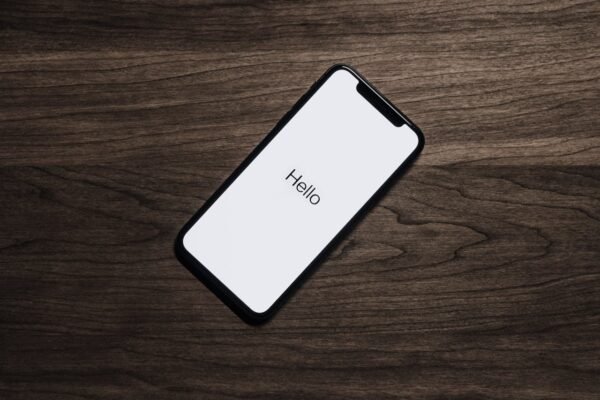A Digital Generation Steps Back
For more than a decade, social media shaped how teenagers connected, expressed themselves, and viewed the world. It was a cultural mainstay—Instagram, TikTok, Snapchat, and newer platforms were practically woven into everyday teenage life.
But something unexpected has happened in 2025.
A growing number of teenagers—especially Gen Z’s younger half and early Gen Alpha—are intentionally stepping away from social media. Not just limiting it, but deleting it altogether. What was once considered unthinkable is now becoming a trend of rebellion, clarity, and control.
So, why are so many teens quitting social media—and what does it say about our current culture?
1. The Mental Health Wake-Up Call
Over the last few years, mounting research has exposed the deep connections between excessive social media use and mental health struggles among young people. Anxiety, depression, loneliness, body image issues, and digital fatigue have all been linked to time spent online.
But now, instead of passively scrolling through harmful content, teens are listening to their minds and bodies.
Many say they feel calmer, more confident, and more connected to real life once they step away. The pressure to curate a perfect image, keep up with trends, or chase likes is simply too exhausting.
This generation isn’t ignoring the mental health data—they’re acting on it.
2. A Shift Toward Privacy and Real Friendships
Teens in 2025 are more aware of their digital footprints than any generation before. From online tracking to screenshots to AI-generated identity theft, there’s a real fear around lack of control.
By quitting—or at least heavily limiting—social media, many teens say they feel safer, more authentic, and more in control of their own narratives.
They’re opting for private group chats, encrypted apps, in-person meetups, or even letter-writing circles over broadcasting their lives online.
It’s not anti-social—it’s re-socializing on their own terms.
3. Less Is the New Cool
For years, being constantly online was a status symbol. The more followers you had, the more validation you received. But in 2025, “not being online” is becoming a status symbol of its own.
There’s a growing aesthetic of:
- Being offline and hard to reach
- Posting nothing, or only a few times a year
- Avoiding trends and content farms
- Protecting peace over popularity
This “quiet quitting” of the internet is now a statement of individuality and independence—a quiet protest against algorithmic control and digital conformity.
4. Screen-Time Fatigue Is Real
Between virtual learning, gaming, streaming, and social media, teenagers spend an average of 8 to 10 hours a day on screens. By the time they hit their late teens, many feel burned out.
They report:
- Reduced attention span
- Headaches and eye strain
- Insomnia
- Feeling emotionally numb
Rather than just blaming platforms, they’re making conscious shifts. Apps are being replaced with real hobbies, screen-time tracking tools are used voluntarily, and devices are left behind when going out.
5. Digital Minimalism Is Now a Movement
Influenced by authors like Cal Newport (Digital Minimalism) and popular YouTube creators promoting “low-tech lifestyles,” many teens are adopting a mindset of intentional, conscious tech use.
They’re not anti-technology—they’re just anti-distraction.
Key elements of the digital minimalist teen:
- Using phones for specific purposes only
- Deleting social apps after school
- Journaling instead of venting online
- Choosing long-form media (like books or podcasts) over reels and shorts
- Spending more time outdoors, at libraries, or in community centers
This minimalism is rooted in self-respect, emotional clarity, and control—values teens are reclaiming for themselves.
6. Alternatives Are Getting Better
New, healthier platforms are emerging that focus on mental wellness, creativity, and learning instead of likes and virality. Teens are increasingly turning to:
- Discord communities for niche topics
- Private forums or journaling apps like Day One
- Mindfulness and wellness platforms like Balance or Headspace
- Substack-style blogging instead of Instagram rants
These alternatives feel more authentic, more private, and more aligned with their values.
7. Teens Are Leading, Not Following
This trend isn’t being pushed by parents, schools, or institutions—it’s coming from within teen communities themselves. You’ll find high schoolers encouraging each other to do “no screen weekends,” share phone-free challenges, or promote dopamine detoxes.
What was once peer pressure to “be online” has become peer inspiration to step away.
Final Thoughts: Quitting to Reclaim Life
Teenagers in 2025 are not just rejecting social media—they’re redefining what connection, confidence, and creativity mean in the digital age.
Quitting social platforms is no longer about disconnecting from the world—it’s about reconnecting to reality, authenticity, and purpose.
And maybe, just maybe, the rest of us could learn something from them.
Useful Links
Want to learn more about digital minimalism and healthy screen habits?





